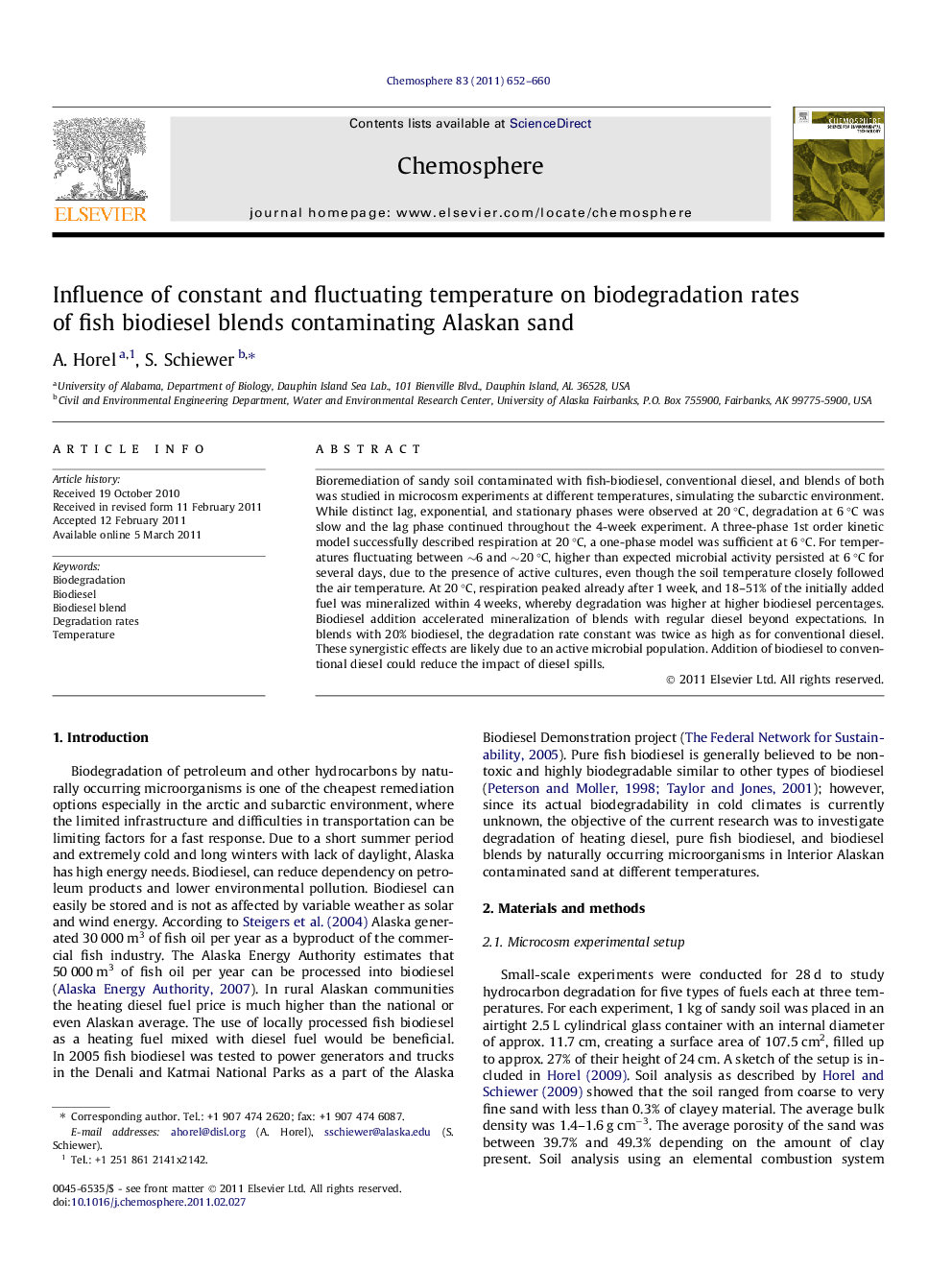| Article ID | Journal | Published Year | Pages | File Type |
|---|---|---|---|---|
| 4410840 | Chemosphere | 2011 | 9 Pages |
Bioremediation of sandy soil contaminated with fish-biodiesel, conventional diesel, and blends of both was studied in microcosm experiments at different temperatures, simulating the subarctic environment. While distinct lag, exponential, and stationary phases were observed at 20 °C, degradation at 6 °C was slow and the lag phase continued throughout the 4-week experiment. A three-phase 1st order kinetic model successfully described respiration at 20 °C, a one-phase model was sufficient at 6 °C. For temperatures fluctuating between ∼6 and ∼20 °C, higher than expected microbial activity persisted at 6 °C for several days, due to the presence of active cultures, even though the soil temperature closely followed the air temperature. At 20 °C, respiration peaked already after 1 week, and 18–51% of the initially added fuel was mineralized within 4 weeks, whereby degradation was higher at higher biodiesel percentages. Biodiesel addition accelerated mineralization of blends with regular diesel beyond expectations. In blends with 20% biodiesel, the degradation rate constant was twice as high as for conventional diesel. These synergistic effects are likely due to an active microbial population. Addition of biodiesel to conventional diesel could reduce the impact of diesel spills.
Graphical abstractCumulative carbon dioxide production over time in soil microcosms for biodegradation of different fuel types (pure conventional diesel, 20% biodiesel, pure fish biodiesel) and temperatures (6, around 12, or 20 C). Mineralization increased with temperature and biodiesel percentage in the fuel.Figure optionsDownload full-size imageDownload as PowerPoint slideResearch highlights► At 20 °C, 50% of fish biodiesel hydrocarbons were mineralized in 4 weeks if fertilized. ► Biodegradation rates increased with fish biodiesel percentage in blends with diesel. ► The lag phase duration increased from about 5 d at 20 °C to over 4 weeks at 6 °C. ► For temporarily lower temperature, degradation rates remained higher than expected. ► A 1st order model with 1–3 growth phases described respiration data well.
